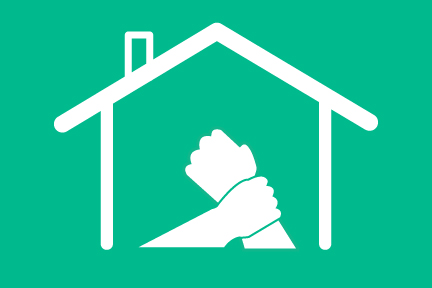Domestic Violence: What To Do

What is Domestic Violence?
Domestic violence is a pattern of behavior in which one family member uses physical violence, coercion, threats, intimidation, isolation, and emotional, sexual or economic abuse to control and change the behavior of the other partner. Domestic violence crosses race, gender, religion, sexual orientation, and socioeconomic lines.The U.S. Department of Justice defines domestic violence as “a pattern of abusive behavior in any relationship that is used by one partner to gain or maintain power and control over another intimate partner. Domestic violence can be physical, sexual, emotional, economic, or psychological actions or threats of actions that influence another person. This includes any behaviors that intimidate, manipulate, humiliate, isolate, frighten, terrorize, coerce, threaten, blame, hurt, injure, or wound someone.” Physical abuse includes hitting, shoving, punching, biting, slapping, etc. Sexual abuse includes forcing or coercing sex, sexual acts, or sexually explicit pictures (regardless of marital status). Emotional abuse is undermining a person’s self-worth including criticizing, name-calling, and belittling. Reproductive control—when a partner sabotages your birth control efforts—is also considered a form of domestic violence.
When You Are The Victim
If you believe that you are the victim of domestic violence, your safety and the safety of your children is most important. You should contact the police immediately, and get yourself and your family to a place of safety, away from the abuser. Contacting a domestic violence hotline is also beneficial for domestic violence victims.Another tool for domestic violence victims is a restraining or protective order. Orders of protection prohibit the abuser from coming within a specified distance of the victim and can require the abuser cease all contact, move out of the family home, and/or pay child or spousal support. Orders of protection can be obtained on an emergency or long-term basis. Each state has different requirements for victims to obtain an order of protection; however, they are always free to file. If a perpetrator of domestic violence is prosecuted for their actions, it is important that you cooperate with the police and criminal prosecutor.
When You Are The Accused
If you are accused of domestic violence, it is imperative that you cooperate with police, prosecutors, and the courts. If there is an order of protection in place, you must strictly obey the order. Violating it can result in jail time, and will make defending your case more difficult. The safest thing to do is completely avoid the accuser and contact an attorney for help. If criminal proceedings ensue, they can either be resolved by you entering into some form of settlement agreement, pleading guilty or “no contest,” and/or fighting the allegations and proceeding to trial. You should consult with a criminal defense lawyer to decide the best course of action in your case.The legal definitions of domestic violence are fairly broad and vary from state to state. Each state decides how to define domestic violence and how its laws will help and protect victims. If you are a victim of domestic violence or have been accused of domestic violence, find an experienced lawyer in your area.
Do You Need An Attorney?
If so, post a short summary of your legal needs to our site and let attorneys submit applications to fulfill those needs. No time wasted, no hassle, no confusion, no cost.

